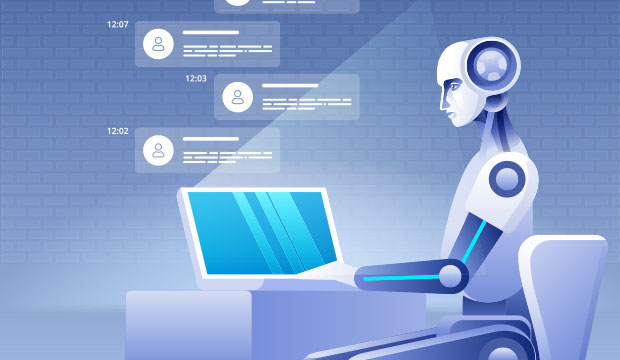Live chat and conversational platform technologies have made significant advancements in the past few years. Thanks to AI and machine learning, these implementations have gone beyond just being a customer support tool to a crucial component of an e-commerce website’s revenue engine.
With the pandemic ongoing, e-commerce is booming right now at the expense of brick-and-mortar. But with Amazon still accounting for 44 percent of all online transactions, e-commerce business owners must constantly search for ways to keep customers on their site and returning for future business.
Live chat is one of the most important tools that retailers can have on their website so that when customers have questions or concerns about a product or service, they can get instant customer support. This is particularly important to service consumers with a high level of intent to purchase so they don’t bounce to a competitor to get their questions answered and make the buy.
However, a live chat tool is only as good as the team and technology behind it — and live chat experiences can vary dramatically from retailer to retailer. There are essential factors that every online seller who is serious about conversions needs to consider.
Here’s what retailers need to know to maximize conversions and satisfy customers using live chat tools in 2021 and beyond.
So Many Channels, So Little Time
When today’s consumers have a question for a retailer, there are a growing number of communications channels they might try to use: the website, email, Facebook, Twitter, Instagram, etc. The longer a customer is left waiting for a response, the more likely a serious shopper will have searched elsewhere for what they were looking for.
But now, live chat technology can be integrated into all the various communication channels. Customer messages that arrive via the channel can be sent to an app on the smartphones of the retailer’s support staff, so they can instantly respond to any customer messages that come through any channel at any time of day.
AI, Machine Learning
Very few technologies haven’t benefited from AI and machine learning — and live chat is no exception. There is a fine balance between technology and human experience when it comes to customer satisfaction. At the end of the day, the advantage of automation is that it saves businesses time and money. The downside is that sometimes your customers just want to speak with a human and get frustrated dealing with bots.
Hiring humans to answer the same questions repeatedly makes little sense. This is why many retailers offer chatbots to respond to common questions, but these can often be a lackluster or frustrating experience from the customer’s perspective.
A live chat system with good AI will monitor hundreds of thousands or millions of live chat conversations between customers and sales associates to identify common customer problems and determine which questions can be automated versus requiring human interaction.
AI can now analyze all your customers’ live chat sessions to understand the most common questions, integrate these answers into a bot, and redirect customers who want to speak to a human instantly with the right person.
AI and Customer Intent
One of the hottest topics recently for retailers has been customer intent. Only 17 percent of customers who visit a website have a serious intention to buy. In turn, this means that 83 percent of people visiting a website have no intent of actually buying anything.
Thanks to AI, state-of-the-art live chat systems can help identify which shoppers on a website have a serious intent to purchase. This gives the retailer a chance to open up a live chat portal and offer these customers the chance to speak to a sales associate. Very much like the in-store experience, these sales associates can help answer any questions, maximize the chance of converting these customers, upsell more products, and offer the best customer experience.
Integrating Freelance Product Experts
One of the primary reasons that retailers don’t have a 24/7 team of people on standby to live chat with their online customers is expense.
However, another key trend that has unfolded recently is integrating independent product experts and sales associates who work on a freelance model (similar to Uber) in the e-commerce live chat system.
Instead of paying full-time staff to respond to customer queries, retailers can now tap into a pool of freelance product experts who work from home and will help customers on behalf of the retailer.
For example, Lowes uses a team of freelance home improvement experts to respond to its customers. These gig-economy experts are pre-vetted on their expertise — in this case, home improvement. Many other retailers utilize freelance experts for chat to help with beauty products, photography, consumer electronics, etc.
These expert advisors work from home, choose their own hours, and jump onto the conversational platform whenever they want to live chat with customers of a particular retailer, or even multiple retailers’ customers, to answer product questions or upsell. The freelance advisor gets paid per chat session they participate in and earns a commission of sales they help to make.
From a retailer’s perspective, they have best-of-breed product experts helping convert and upsell customers who are identified as having serious intent on their website without the expense of paying full-time staff.
Conclusion
E-commerce continues to grow exponentially, but with Amazon always just one click away, retailers can outdo the competition by providing a better customer experience and adding the human element to their website. Live chat is the main portal for connecting online customers to people from your company or someone who works on your behalf.
A live chat or conversational platform is only as good as the technology and the team behind it. Retailers who see it as a crucial part of their e-commerce experience and use the technology to the best of their ability will experience greater conversions and customer satisfaction scores compared to those who do not.















































